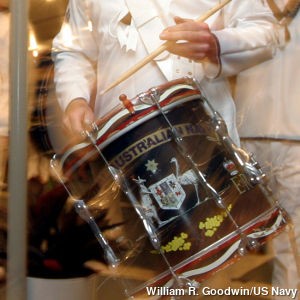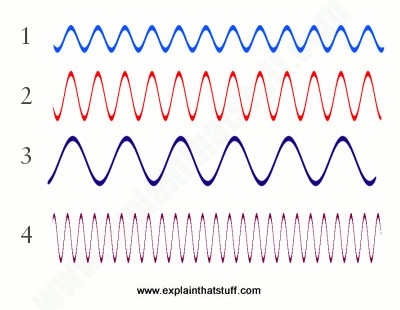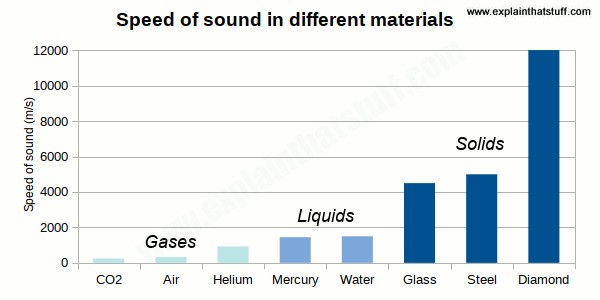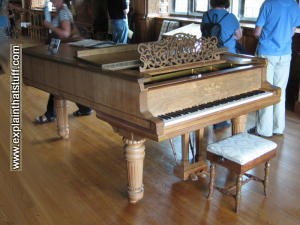Sound, an integral part of our daily lives, shapes our experiences, from the gentle chirping of birds to the vibrant melodies of music. At TRAVELS.EDU.VN, we explore the fascinating science behind sound propagation, explaining how sound waves travel and interact with their environment. Discover the nuances of sound and its impact on our world.
1. What is Sound and How Does It Travel?
Sound originates from vibrations. When an object vibrates, it disturbs the surrounding medium, typically air, creating sound waves. Sound needs a medium to travel. These waves consist of compressions (areas of high pressure) and rarefactions (areas of low pressure), which propagate outward from the source. This process is crucial for understanding audio transmission and acoustics.
Think of it like this: imagine dropping a pebble into a calm pond. The pebble creates ripples that move outward across the water’s surface. Sound waves behave similarly, spreading outward from a vibrating source.
 Navy drummer hits a drum with his sticks
Navy drummer hits a drum with his sticks
2. The Role of a Medium in Sound Transmission
Unlike light, which can travel through a vacuum, sound requires a medium such as air, water, or solids to propagate. The molecules of the medium vibrate and transmit the sound energy. This principle is essential for understanding acoustics in different environments and the design of soundproofing materials.
- Air: The most common medium for sound travel, allowing us to hear conversations, music, and environmental sounds.
- Water: Sound travels much faster in water than in air, making it crucial for marine communication and sonar technology.
- Solids: Sound can travel through solids like metal and wood, often at even greater speeds than in air or water.
3. Robert Boyle’s Experiment: Demonstrating Sound’s Need for a Medium
Robert Boyle’s experiment in the 17th century provided definitive proof that sound requires a medium to travel. By placing a ringing clock inside a vacuum chamber and gradually removing the air, Boyle observed that the sound diminished until it was no longer audible. This experiment remains a cornerstone in understanding the physics of sound.
The experiment vividly illustrates that without a medium, sound waves have nothing to vibrate and, therefore, cannot travel.
 Robert Boyle
Robert Boyle
4. Longitudinal Waves: The Nature of Sound Waves
Sound waves are longitudinal waves, meaning the particles of the medium vibrate parallel to the direction of wave propagation. This contrasts with transverse waves, like light waves, where the vibrations are perpendicular to the direction of travel. Understanding this distinction helps in comprehending the behavior of sound in different materials and environments.
Longitudinal waves create areas of compression and rarefaction as they move through the medium.
5. Reflection of Sound Waves: Echoes and Sonar
Sound waves can be reflected off surfaces, creating echoes. The time it takes for an echo to return can be used to determine the distance to the reflecting surface. This principle is utilized in sonar technology, which is vital for underwater navigation, mapping, and detecting objects. This echoes are very important when considering acoustics in Napa Valley Concert Venues.
Naval vessels use sonar to detect submarines, while bats use echolocation to navigate and hunt in the dark.
 Side-scan sonar image of a World War II boat wrecked on the seabed
Side-scan sonar image of a World War II boat wrecked on the seabed
6. Diffraction of Sound Waves: Bending Around Corners
Diffraction is the phenomenon where sound waves bend around obstacles or spread out as they pass through small openings. This allows us to hear sounds even when we are not in a direct line of sight to the source. Diffraction is essential for understanding how sound behaves in complex environments and how it can be manipulated for acoustic purposes.
Imagine hearing a conversation from around the corner of a building – that’s diffraction in action.
7. Whispering Galleries and Amphitheaters: Harnessing Sound Reflection
Whispering galleries, such as the dome of the US Capitol, and amphitheaters are architectural marvels that utilize sound reflection to enhance sound transmission. The curved surfaces of these structures focus sound waves, allowing whispers to be heard clearly over considerable distances. These structures demonstrate the practical application of acoustic principles in design.
These acoustic wonders provide unique auditory experiences, showcasing the intersection of science and art.
 US Capitol in Washington DC
US Capitol in Washington DC
8. Amplitude and Frequency: Defining Sound Characteristics
Sound waves have two key characteristics: amplitude and frequency. Amplitude determines the loudness of a sound, while frequency determines its pitch. Understanding these properties is crucial for analyzing and manipulating sound, whether for music production, audio engineering, or diagnostic purposes.
- Amplitude: Measured in decibels (dB), indicates the intensity or loudness of the sound.
- Frequency: Measured in hertz (Hz), indicates the pitch or tone of the sound.
9. Understanding Waveforms: Amplitude, Frequency, and Timbre
When studying sound, waveforms are critical in understanding a sound’s qualities. Consider four scenarios to appreciate their complexity:
- Standard Wave: A standard wave vibrates at a certain amplitude and frequency to define the sound.
- Amplitude Variation: If the frequency is constant but the amplitude doubles, the sound is louder but the pitch is the same.
- Frequency Variation: If the amplitude is constant but the frequency is halved, the sound is of a lower pitch.
- High-Frequency Wave: A wave with double the frequency of the original waves sounds much higher in pitch.
These variations in waveforms affect our perception of the sound and are crucial to the acoustic experience.
 Simple explanation of amplitude and frequency
Simple explanation of amplitude and frequency
10. How Instruments Sound Different: Harmonics and Timbre
Even when producing the same note, different musical instruments sound unique due to their distinct harmonic content and timbre. Each instrument generates a fundamental frequency along with a series of overtones or harmonics, which contribute to its characteristic sound quality. This understanding is vital for musicians, sound engineers, and instrument designers.
For example, a violin and a piano playing the same note will have different timbres due to the unique blend of harmonics produced by each instrument.
11. The Speed of Sound: Factors Affecting Sound Velocity
The speed of sound varies depending on the medium through which it travels and its temperature. Sound travels faster in warmer air and denser materials. Knowing the speed of sound is essential for various applications, including calculating distances using sound waves and designing acoustic systems.
At sea level, the speed of sound in air is approximately 343 meters per second (1,235 km/h or 767 mph).
12. Why Sound Travels Faster in Some Materials: Density and Elasticity
Sound travels faster in materials that are denser and more elastic. In solids, molecules are closely packed and strongly bonded, allowing sound waves to propagate more efficiently. This is why sound travels much faster in steel than in air or water. Understanding this principle is essential for selecting appropriate materials for acoustic applications and soundproofing.
For instance, sound travels approximately 15 times faster in steel than in air.
 Bar chart showing the speed of sound in common solids, liquids, and gases
Bar chart showing the speed of sound in common solids, liquids, and gases
13. Measuring the Speed of Sound: Practical Experiments
Measuring the speed of sound can be done using simple experiments involving echoes. By measuring the time it takes for an echo to return from a known distance, one can calculate the speed of sound. These experiments provide a hands-on way to understand the physics of sound and wave propagation.
One can clap at regular intervals and measure the total time required for the echoes to return, and use the data to calculate the speed of sound.
14. Sound in Practice: Applications in Everyday Life
Sound plays a crucial role in our daily lives, from communication and entertainment to medical diagnostics and environmental monitoring. Understanding sound principles enables us to develop and improve various technologies and applications that enhance our quality of life.
- Communication: Spoken language, music, and audio technologies.
- Entertainment: Musical instruments, sound systems, and recording devices.
- Medical Diagnostics: Ultrasound imaging for medical examinations.
15. Explore Napa Valley with Enhanced Sound Experiences
Napa Valley, renowned for its picturesque vineyards and vibrant culture, offers unique opportunities to experience sound in captivating ways. Imagine attending a concert at the Napa Valley Performing Arts Center at Lincoln Theater, where the acoustics are meticulously designed to enhance every note. Or picture yourself enjoying a serene picnic with ambient sounds of nature, amplified by the valley’s natural topography.
 Steinway grand piano at Lanhydrock, Cornwall
Steinway grand piano at Lanhydrock, Cornwall
Acoustic Delights in Napa Valley
- Live Music Venues: Napa Valley hosts an array of live music venues, from intimate wineries to grand theaters, each offering distinct acoustic experiences.
- Outdoor Concerts: The natural landscape of Napa Valley provides a stunning backdrop for outdoor concerts, where the sound interacts with the environment to create unique auditory moments.
- Wine Caves: Some wineries feature wine caves, which not only offer a cool storage environment for wines but also intriguing acoustic properties due to their unique architecture.
Optimize Your Napa Valley Experience with TRAVELS.EDU.VN
Planning your visit to Napa Valley can be overwhelming, but TRAVELS.EDU.VN simplifies the process with curated travel packages designed to enhance your auditory experiences:
- Concert Packages: Gain access to premier concert events with VIP seating and exclusive backstage experiences. Enjoy the rich acoustic environment without the hassle of planning.
- Average cost: $300 – $800 per person
- Benefits: Premium seating, exclusive access, and a dedicated concierge service.
- Winery Audio Tours: Explore Napa Valley’s wineries through immersive audio tours that detail the history, science, and artistry behind winemaking.
- Average cost: $75 – $150 per person
- Benefits: Expert narration, insider perspectives, and a flexible schedule.
- Nature Sound Retreats: Immerse yourself in the natural sounds of Napa Valley with guided nature walks and serene picnic settings.
- Average cost: $200 – $400 per person
- Benefits: Professional guides, premium picnic provisions, and tranquil, secluded locations.
Why Choose TRAVELS.EDU.VN?
At TRAVELS.EDU.VN, we are committed to providing exceptional travel experiences tailored to your unique interests:
- Expertise: Our team comprises travel experts who specialize in crafting unforgettable Napa Valley adventures.
- Convenience: We handle all the details, from booking accommodations to arranging transportation, ensuring a seamless travel experience.
- Personalization: We customize packages to meet your specific preferences, whether you’re a music enthusiast, a wine connoisseur, or a nature lover.
16. Ready to Book Your Unforgettable Napa Valley Audio Adventure?
Don’t miss out on the opportunity to explore Napa Valley with TRAVELS.EDU.VN. Our expertly crafted tours ensure an unforgettable journey tailored to your interests. Contact us today to book your adventure and experience Napa Valley like never before.
Contact Information:
- Address: 123 Main St, Napa, CA 94559, United States
- WhatsApp: +1 (707) 257-5400
- Website: TRAVELS.EDU.VN
Let travels.edu.vn transform your travel dreams into reality.
Frequently Asked Questions (FAQ)
-
What is sound?
Sound is a form of energy produced by vibrating objects, which travels through a medium such as air, water, or solids. -
How Does Sound Travel?
Sound travels as waves through a medium, created by alternating compressions and rarefactions of the medium’s particles. -
Why can’t sound travel through a vacuum?
Sound requires a medium to propagate; a vacuum lacks the particles necessary to transmit the vibrations. -
What is the speed of sound?
The speed of sound in air at sea level is approximately 343 meters per second (1,235 km/h or 767 mph), but it varies with temperature and the medium’s density. -
What is the difference between amplitude and frequency?
Amplitude determines the loudness of a sound, while frequency determines its pitch. -
How do different instruments produce different sounds?
Different instruments produce unique blends of harmonics and timbres, which give them their characteristic sound qualities. -
What is an echo?
An echo is the reflection of sound waves off a surface, allowing us to hear the sound again after a delay. -
What is diffraction?
Diffraction is the bending of sound waves around obstacles or through small openings, allowing us to hear sounds even when we are not in a direct line of sight to the source. -
How is sound used in sonar technology?
Sonar uses sound waves to detect objects underwater by emitting sound pulses and analyzing the echoes that return. -
How can I measure the speed of sound?
You can measure the speed of sound by timing how long it takes for an echo to return from a known distance and then calculating the speed using the formula: speed = distance / time.